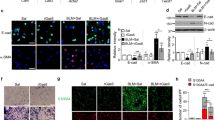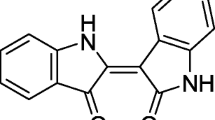Abstract
Human airway epithelial cells (HAEC) may contribute to acute lung injury (ALI) and acute respiratory distress syndrome (ARDS) through toll-like receptors (TLRs)-mediated molecular mechanisms. TLRs exist on the surface of HAEC where binding to their cognate ligands initiates airway inflammation. Single immunoglobulin interleukin-1 receptor-related protein (SIGIRR) is a member of the toll-interleukin-1 receptor (TIR) family that can negatively modulate the immune response. We carried out studies to characterize SIGIRR modulation of TLR-mediated immune response in HAEC and to define its mechanisms of action. Following treatment with various concentrations of LPS, flagellin and CpG DNA, the levels of cognate TLRs 4, 5, and 9 were measured in the supernatants of HAEC over-expressing the SIGIRR molecule. Moreover, the interaction of the TLR adaptor myeloid differentiation factor 88 (MyD88) with SIGIRR in response to LPS-, flagellin- and CpG DNA-stimulation was examined by co-immunoprecipitation. The findings from this study revealed that overexpression of SIGIRR in HAEC stimulated by LPS, flagellin or CpG DNA resulted in attenuated production of the inflammatory mediators IL-6 and TNF-α. This attenuation was not the result of decreased expression of TLR4, 5 or 9, but rather a sequestration of MyD88 to the TLRs. In conclusion, SIGIRR can inhibit TLR4, 5, and 9-mediated immune responses in HAEC and may be a valuable therapeutic target for the prevention of ALI/ARDS.







Similar content being viewed by others
References
Wang X, Adler KB, Erjefalt J, Bai C (2007) Airway epithelial dysfunction in the development of acute lung injury and acute respiratory distress syndrome. Expert Rev Respir Med 1:149–156
Diamond G, Legarda D, Ryan LK (2000) The innate immune response of the respiratory epithelium. Immunol Rev 173:27–38
Lee MS, Kim YJ (2007) Signaling pathways downstream of pattern-recognition receptors and their cross talk. Annu Rev Biochem 76:447–480
Miadonna A, Gibelli S, Lorini M et al (1997) Expression of cytokine mRNA in bronchoalveolar lavage cells from atopic asthmatics before late antigen-induced reaction. Lung 175:195–209
Beutler B, Hoebe K, Georgel P, Tabeta K, Du X (2005) Genetic analysis of innate immunity: identification and function of the TIR adapter proteins. Adv Exp Med Biol 560:29–39
Kawai T, Akira S (2005) Pathogen recognition with toll-like receptors. Curr Opin Immunol 17:338–344
Yamamoto M, Sato S, Hemmi H et al (2003) TRAM is specifically involved in the toll-like receptor 4-mediated MyD88-independent signaling pathway. Nat Immunol 4:1144–1150
Kawai T, Adachi O, Ogawa T, Takeda K, Akira S (1999) Unresponsiveness of MyD88-deficient mice to endotoxin. Immunity 11:115–122
Hertzog PJ, O’Neill LA, Hamilton JA et al (2003) The interferon in TLR signaling: more than just antiviral. Trends Immunol 24:534–539
Beutler B (2004) Inferences, questions and possibilities in toll-like receptor signalling. Nature 430:257–263
Weighardt H, Holzmann B (2007) Role of toll-like receptor responses for sepsis pathogenesis. Immunobiology 212:715–722
Du X, Poltorak A, Wei Y, Beutler B et al (2000) Three novel mammalian toll-like receptors: gene structure, expression, and evolution. Eur Cytokine Netw 11:362–371
Kimbrell DA, Beutler B (2001) The evolution and genetics of innate immunity. Nat Rev Genet 2:256–267
Thomassen E, Renshaw BR, Sims JE (1999) Identification and characterization of SIGIRR, a molecule representing a novel subtype of the IL-1r superfamily. Cytokine 11:389–399
Polentarutti N, Rol GP, Muzio M et al (2003) Unique pattern of expression and inhibition of IL-1 signaling by the IL-1 receptor family member TIR8/SIGIRR. Eur Cytokine Netw 14:211–218
Wald D, Qin J, Zhao Z, Qian Y et al (2003) SIGIRR, a negative regulator of toll-like receptor-interleukin 1 receptor signaling. Nat Immunol 4:920–927
Huang X, Hazlett LD, Du W, Barrett RP (2006) SIGIRR promotes resistance against pseudomonas aeruginosa keratitis by down-regulating type-1 immunity and IL-1R1 and TLR4 signaling. J Immunol 177:548–556
Xiao H, Gulen MF, Qin J et al (2007) The toll-interleukin-1 receptor member SIGIRR regulates colonic epithelial homeostasis, inflammation, and tumorigenesis. Immunity 26:461–475
Tsuboi N, Yoshikai Y, Matsuo S et al (2002) Roles of toll-like receptors in c-c chemokine production by renal tubular epithelial cells. J Immunol 169:2026–2033
Qin J, Qian Y, Yao J, Grace C, Li X (2005) SIGIRR inhibits interleukin-1 receptor- and toll-like receptor 4-mediated signaling through different mechanisms. J Biol Chem 280:25233–25241
Granio O, Norez C, Ashbourne Excoffon KJ et al (2007) Cellular localization and activity of Ad-delivered GFP-cftr in airway epithelial and tracheal cells. Am J Respir Cell Mol Biol 37:631–639
Li Q, Zhou XD, Xu XY, Yang J (2009) Recombinant human elafin protects airway epithelium integrity during inflammation. Mol Biol Rep. doi:10.1007/s11033-009-9865-z
Garlanda C, Di Liberto D, Vecchi A et al (2007) Damping excessive inflammation and tissue damage in mycobacterium tuberculosis infection by toll IL-1 receptor 8/single ig IL-1-related receptor, a negative regulator of IL-1/TLR signaling. J Immunol 179:3119–3125
Adib-Conquy M, Adrie C, Fitting C et al (2006) Up-regulation of MyD88s and SIGIRR, molecules inhibiting toll-like receptor signaling, in monocytes from septic patients. Crit Care Med 34:2377–2385
Garlanda C, Riva F, Polentarutti N et al (2004) Intestinal inflammation in mice deficient in TIR8, an inhibitory member of the IL-1 receptor family. Proc Natl Acad Sci USA 101:3522–3526
Garlanda C, Riva F, Veliz T et al (2007) Increased susceptibility to colitis-associated cancer of mice lacking TIR8, an inhibitory member of the interleukin-1 receptor family. Cancer Res 67:6017–6021
Lech M, Garlanda C, Mantovani A et al (2007) Different roles of TIR8/SIGIRR on toll-like receptor signaling in intrarenal antigen-presenting cells and tubular epithelial cells. Kidney Int 72:182–192
Chen Z, Ma G, Qian Q et al (2009) Toll-like receptor 8 polymorphism and coronary artery disease. Mol Biol Rep 36:1897–1901
Xu CJ, Zhang WH, Pan HF et al (2009) Association study of a single nucleotide polymorphism in the exon 2 region of toll-like receptor 9 (TLR9) gene with susceptibility to systemic lupus erythematosus among Chinese. Mol Biol Rep 36:2245–2248
Wesche H, Henzel WJ, Shillinglaw W, Li S, Cao Z (1997) MyD88: an adapter that recruits IRAK to the IL-1 receptor complex. Immunity 7:837–847
Burns K, Martinon F, Esslinger C et al (1998) MyD88, an adapter protein involved in interleukin-1 signaling. J Biol Chem 273:12203–12209
O’Neill LA (2003) SIGIRR puts the brakes on toll-like receptors. Nat Immunol 4:823–824
Gong J, Wei T, Stark RW et al. (2009) Inhibition of toll-like receptors TLR4 and 7 signaling pathways by SIGIRR: a computational approach. J Struct Biol. doi:10.1016/j.jsb.2009.12.007
Bartfai T, Behrens MM, Gaidarova S et al (2003) A low molecular weight mimic of the toll/IL-1 receptor/resistance domain inhibits IL-1 receptor-mediated responses. Proc Natl Acad Sci USA 100:7971–7976
Ragnarsdottir B, Samuelsson M, Gustafsson MC (2007) Reduced toll-like receptor 4 expression in children with asymptomatic bacteriuria. J Infect Dis 196:475–484
Acknowledgements
The authors are grateful for the technical assistance of W. Sun in confocal fluorescence microscopy. This work was supported by the National Natural Science Foundation of China (NSFC No. 30600272) and the National Natural Science Foundation of Chongqing (2008BB5121).
Author information
Authors and Affiliations
Corresponding author
Additional information
Chun Zhang and Xueling Wu contributed equally to this work.
Electronic supplementary material
Below is the link to the electronic supplementary material.
Rights and permissions
About this article
Cite this article
Zhang, C., Wu, X., Zhao, Y. et al. SIGIRR inhibits toll-like receptor 4, 5, 9-mediated immune responses in human airway epithelial cells. Mol Biol Rep 38, 601–609 (2011). https://doi.org/10.1007/s11033-010-0146-7
Received:
Accepted:
Published:
Issue Date:
DOI: https://doi.org/10.1007/s11033-010-0146-7




